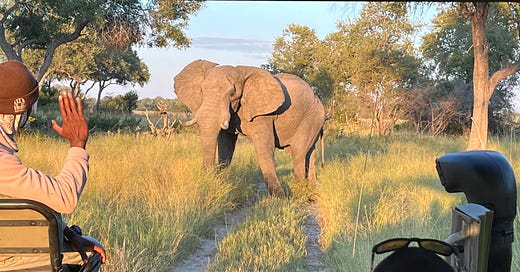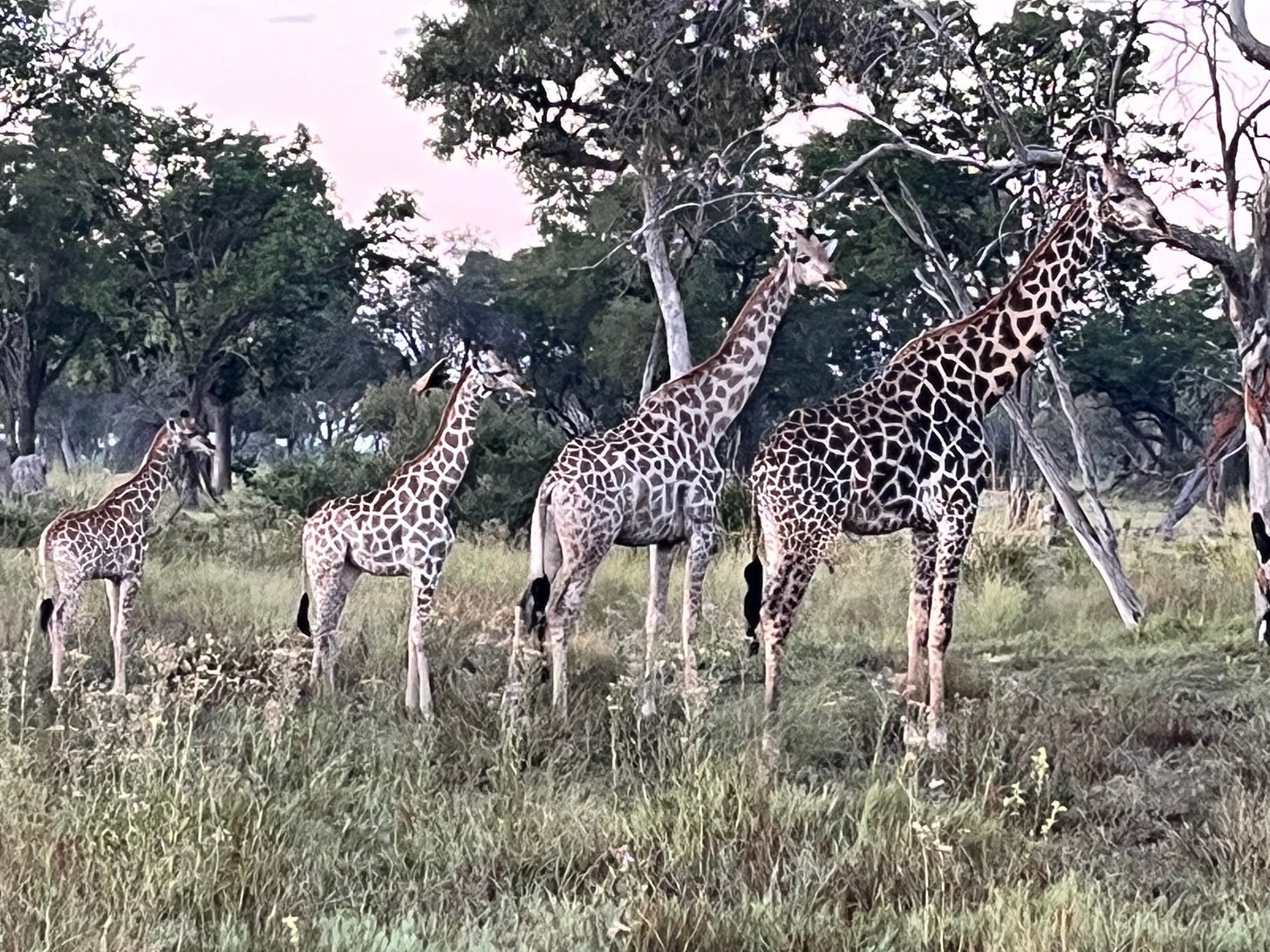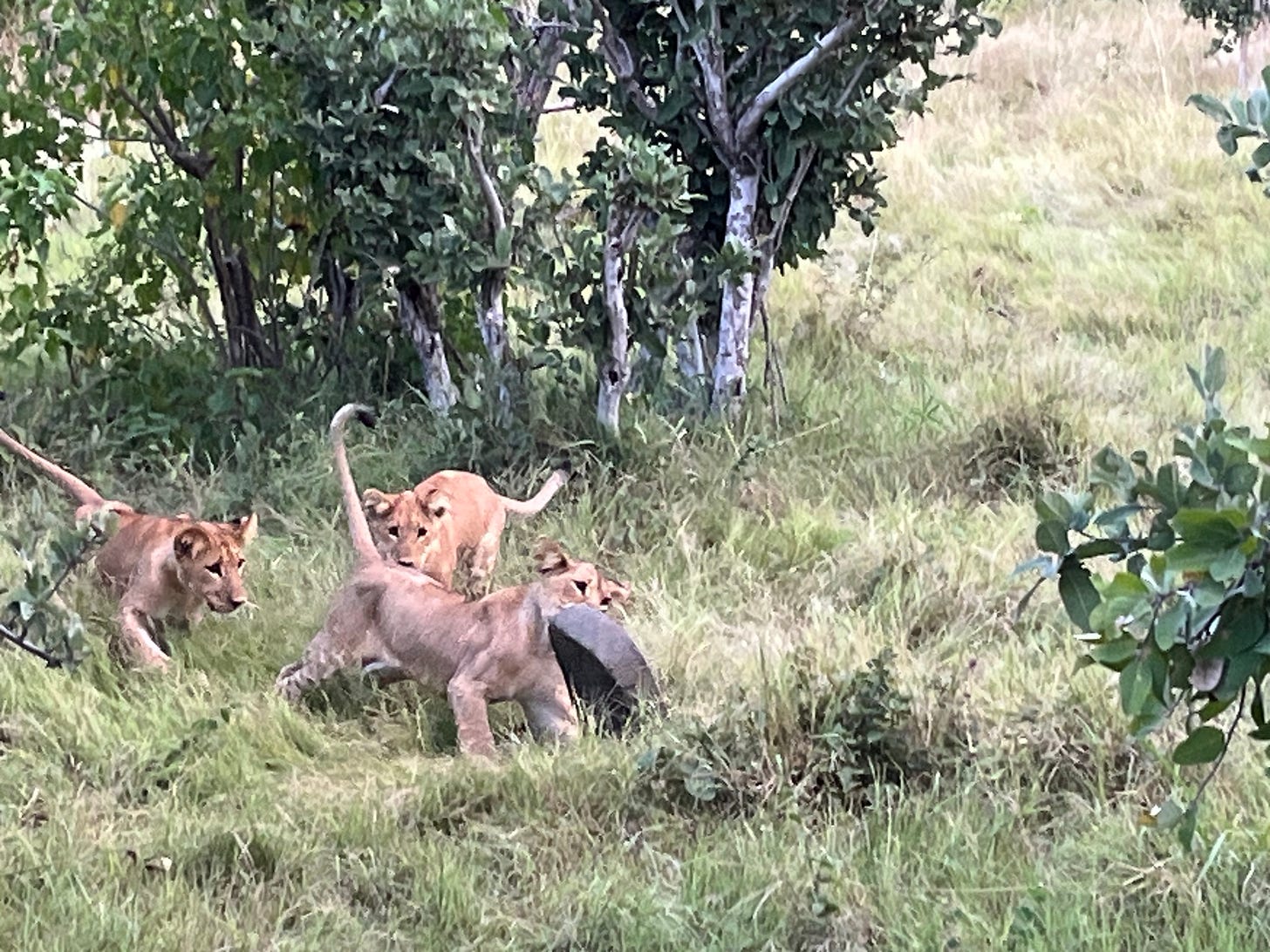After a somewhat fitful night of sleep getting acclimated to the sounds of loud frogs, grunting hippos, and possibly hyenas outside our stilted lodging, we set out at 6:15 a.m. for our first full safari day in northern Botswana’s Kwando 4 Rivers Camp. Our first animals appeared almost right away—giraffes. Zebras were there too, as they like to follow the giraffes because they know the long-neck creatures can see any trouble on the way.
After a brief stop to admire the ground hornbill, we watched a very playful 30-year-old elephant shake its ears at us and then a herd of cape buffalo stared us down, but we were reassured by our guides that they will never charge as long as we’re in the Land Rover (but never be on the ground with them around because they feel threatened). They treat us as one when we’re in the vehicle and may think we’re a big lion.
Speaking of the big cats, we really want to see the elusive leopards and cheetahs. We are informed to look for leopards in the trees and cheetahs on the ground. Lions leave tracks, which is why they are easier for the guides to find. And sure enough, we find the first of our lion prides—completely mesmerizing, serious, but yet somehow playful creatures.
Some interesting tidbits from our main guides Kelvin and Kenny:
It’s interesting that the delta here doesn’t run off into the ocean, mainly because earthquakes and mining shift the land constantly and have dried up areas further south that were once wet.
Rhinos are often thought to have gone extinct as long as 500 years ago from the region but it really only happened very recently.
Sausage trees are the national tree. Animals like to eat the “sausage,” but it’s no good for humans other than as a skin care for rashes.
Kelvin and Akeem’s successful tracking of the two female lions built up the suspense for much of the late morning. We first found one sleeping under a tree, and it wasn’t long before she hopped up and the other lion appeared and led us to their baby den. Six cubs, about six to seven months old, appeared and we followed their walk until they arrived at their afternoon napping spot.
Earlier, we had lost a cushion from the front vantage seat of the vehicle. When we found it, one of my older brothers saw it and almost jumped out to grab it. Luckily he didn’t because it was on the ground just feet from the lions’ resting spot.
Civet antelope, striped kingfisher, water bucks, vervet, guinea fowl, and baboons were among the next animals in our quickly growing collection of viewing.
We set out to catch back up with the lions in the late afternoon and found them right where we had lost the cushion, with the adorable six youngsters playing with the cushion, which appeared to somehow be unbreakable. They also played with an antelope skull. We left them after a long time to let them feed from their mothers.
In general with lions, the males leave the pride around 2.5 years and these ones in the wild have a life span of around 15 years—typically shorter than those in zoos because of their vulnerability.
A successful day was made complete with the excellent and constant food at 4 Rivers, as dinner was highlighted by venison, stuffed chicken, and a variety of sides.









